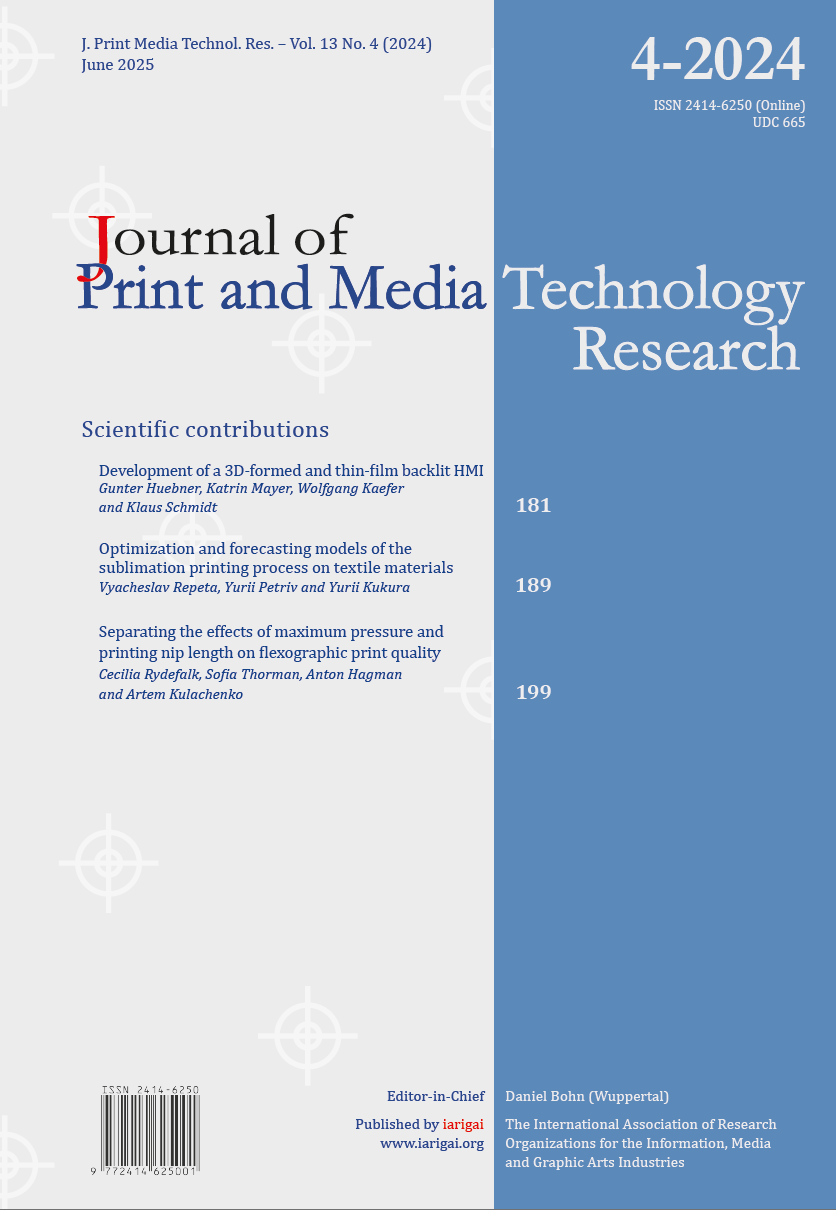Separating the effects of maximum pressure and printing nip length on flexographic print quality
Main Article Content
Abstract
When adjusting the impression in a printing press both the maximum pressure induced and the contact length between the print form and the substrate are simultaneously altered. In the present study, lab printing was performed with controlled load cases. The load cases were chosen to achieve varying nip lengths or maximum pressure. A lab-scale printing press was augmented with a pressure sensor that measures the width of the print over a square area. By altering the print forms and the force settings in the machine, the print nip pressure pulse was controlled. Printing was performed in both solid tone and halftone, and the printed result was evaluated for mottle, density, and dot-gain. By increasing the maximum pressure, the color density increases. By increasing the nip length at a fixed maximum pressure, the color density decreases. The variation within the settings in the present study is small and appears to originate from the split pattern. The change in the nip exit angle with increased nip length is sufficient to alter the ink split point and, thereby, the density. A higher maximum pressure can instead enable a higher ink transfer.
Article Details

This work is licensed under a Creative Commons Attribution-NonCommercial 4.0 International License.
